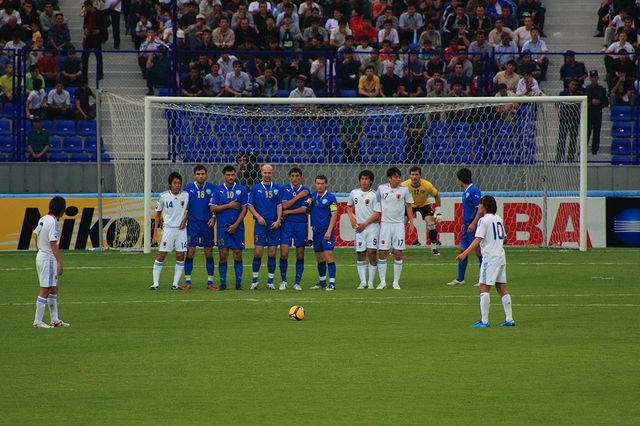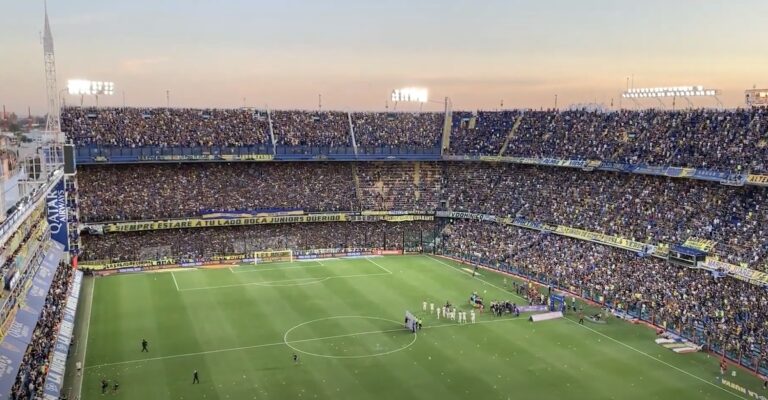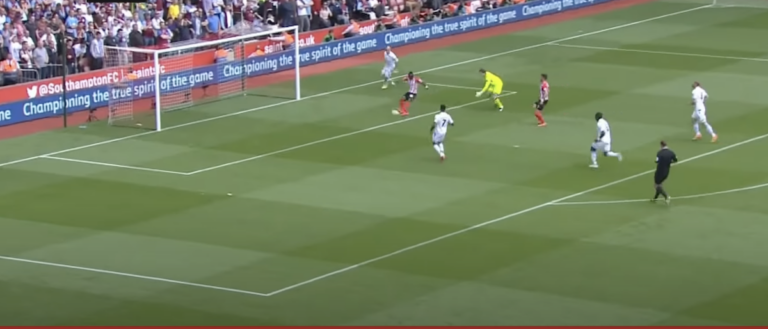Direct vs Indirect Free Kicks In Soccer Explained
The ‘free kick’ is a staple of soccer’s rules and regulations. It was a concept first introduced by England’s football association as both standard practice and law in 1872. There are two variations of a free kick labelled ‘direct’ and ‘indirect.’ But what is the difference between them?
Here are direct vs indirect free kicks in soccer explained.
What Is A Free Kick In Soccer?
A free-kick in soccer is designed as a way of restarting the game after a foul has been committed. The opposing team is required to stand at least 10 yards away from where the free kick is to be taken and the spot where the foul was committed.
A ‘free kick’ is considered to be ‘free’ because the opposition are not allowed to interfere with the kick itself including tackling or attempting to win back possession. Players are gifted both time and space to choose their next move. Once the ball is kicked then the game restarts.

How Many Types Of Free Kicks Are There?
There are two distinct types of free kick in soccer. The first is called a ‘direct’ free kick whilst the other is referred to as ‘indirect.’ The referee will choose to award either type of kick dependent on the foul that is committed.
What’s The Difference Between A Direct And Indirect Kick?
Direct vs indirect free kicks in soccer are different. A direct kick allows a player to attempt a shot at the goal in order to score. To legally complete an indirect free kick however, a teammate must touch the ball first before the second player can either make a forward pass or try to score a goal.

What Direct Free Kick Rules Are There?
There are various simple rules that must be abided by in order to successfully take a direct free kick. Firstly, any kick must be taken from where the foul was committed and must also be stationary when struck.
If either of these rules are not followed, then the referee will likely ask for the free kick to be retaken correctly.
Any player from the opposing team must retreat at least 10 yards from the ball. The referee will request that any player standing too closely to the ball should move back to the required distance and if they fail to do so will often receive a yellow card as a warning.
The taker of any direct free kick is only allowed to touch the ball once before play resumes and is able to either shoot at goal or pass the ball if they wish instead.
What Fouls Are Direct Kicks In Soccer?
There are several types of fouls that can result in direct vs indirect free kicks in soccer being awarded.
These seven main foul types occur if a player:
- is careless, reckless or uses excessive force
- kicks or tries to kick an opponent
- strikes or tries to strikes an opponent
- pushes an opponent
- charges at an opponent
- trips or tries to trip an opponent
- jumps toward an opponent
There are three more incidences when a direct kick can be given:
- Deliberately handling the ball (including when goalkeepers are outside their 18-yard box)
- Spitting at an opponent
- Holding an opponent
Fouls in soccer are often more common than some American Sports and are particularly rare in Baseball games among other U.S sports, you can read more here to learn about other American Sports and where to place bets on games.

What Fouls Are Indirect Kicks In Soccer?
These are the seven main fouls types for which an indirect free kick being awarded:
- Impeding an opponent without making contact
- Dangerous play
- Offside
- Stopping the goalkeeper from kicking the ball from their hands or feet
- Trying to kick the ball when the goalie is releasing it
- Dissent – including the use of offensive, insulting or abusive language (actions or other verbal offences)
- Setting up a back pass
There are four main reasons an indirect free kick will be given against a goalkeeper:
- Handling the ball when a teammate deliberately passes to them (a back pass)
- Handling the ball from a teammate’s throw in
- Holding onto the ball for more than six seconds before releasing it
- Handling the ball after releasing it and before another player has touched it
What Indirect Free Kick Rules Are There?
Much like a direct free kick, an indirect free kick must be taken from where the foul was committed and must also be stationary when struck. If either of these rules are not followed, then the referee will likely ask for the indirect free kick to be retaken correctly.
As when taking a direct free kick, any player from the opposing team must stand at least 10 yards from the ball when an indirect free kick is given.
The taker of an indirect free kick can’t shoot directly at the goal. As a result, the ball must be touched by another teammate before a pass or attempt at goal can be made. If a player kicks the ball into the goal straight from an indirect kick then the goal scored won’t count. If this happens then a goal kick will be awarded to the opposing team in order to restart the game.
Is A High Foot An Indirect Free Kick?
A ‘high foot’ is a reason for an indirect free kick to be awarded. Raising the foot too high is thought of as being dangerous and could result in serious injury. Aiming a foot at the opponent’s body or head often impedes their progress – even if contact is never made.
What Happens With Indirect Free Kicks In The Box?
When an indirect free kick occurs in the box then normal indirect free kicks rules apply – except the opposing team’s players are permitted to be closer than ten yards away from the ball – because there usually won’t be enough space. Often players will be forced to stand on the goal-line.
The taker of an indirect free kick is still unable to shoot at the goal directly because of the rule that dictates you must pass first. Also every opposing player can defend the goal and so often indirect free kicks in the box can cause moments of chaos.

Typically it’s my passion for Sports and Music that get the typing juices flowing. But ultimately I enjoy writing or blogging about any topic I can get my keyboard thrashing hands on!





